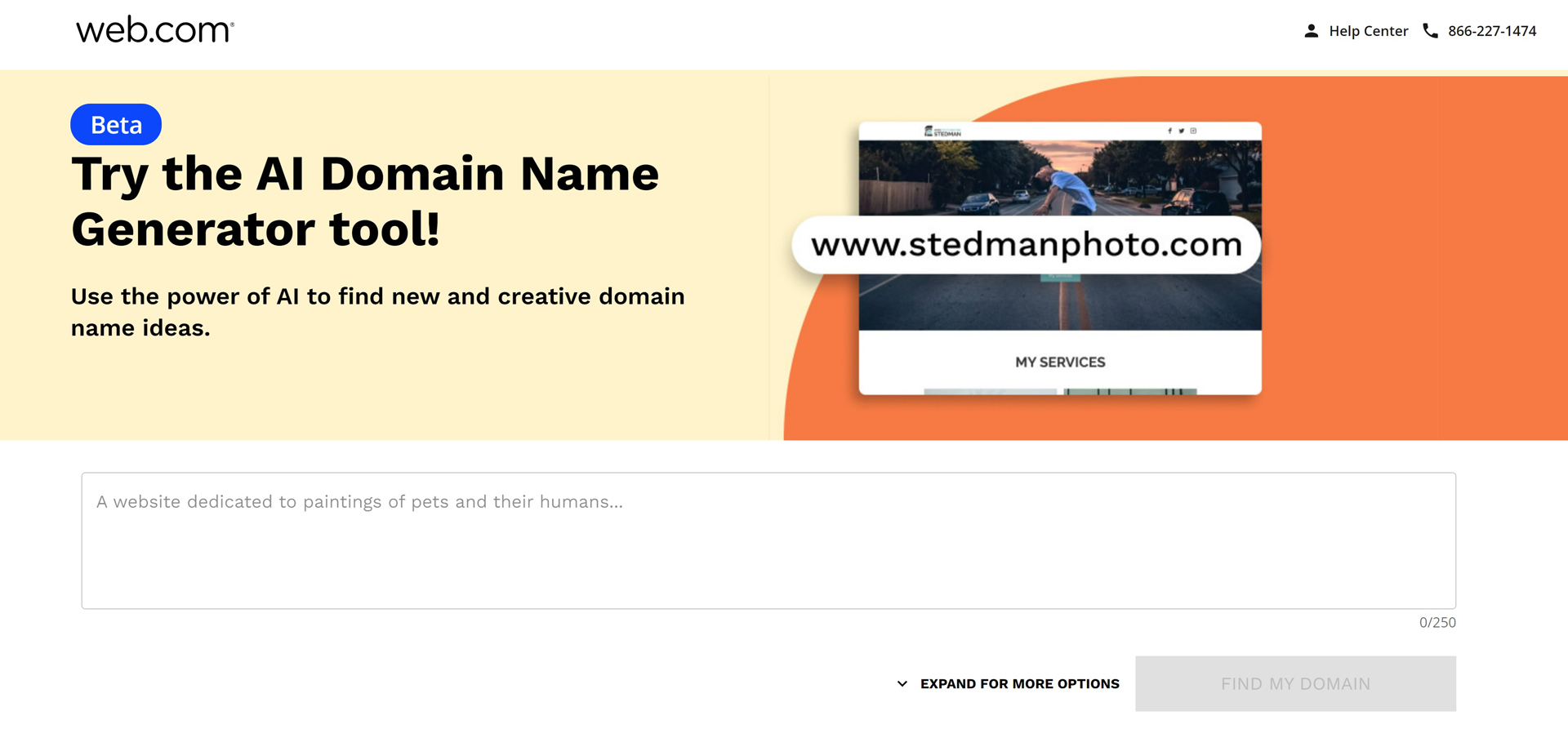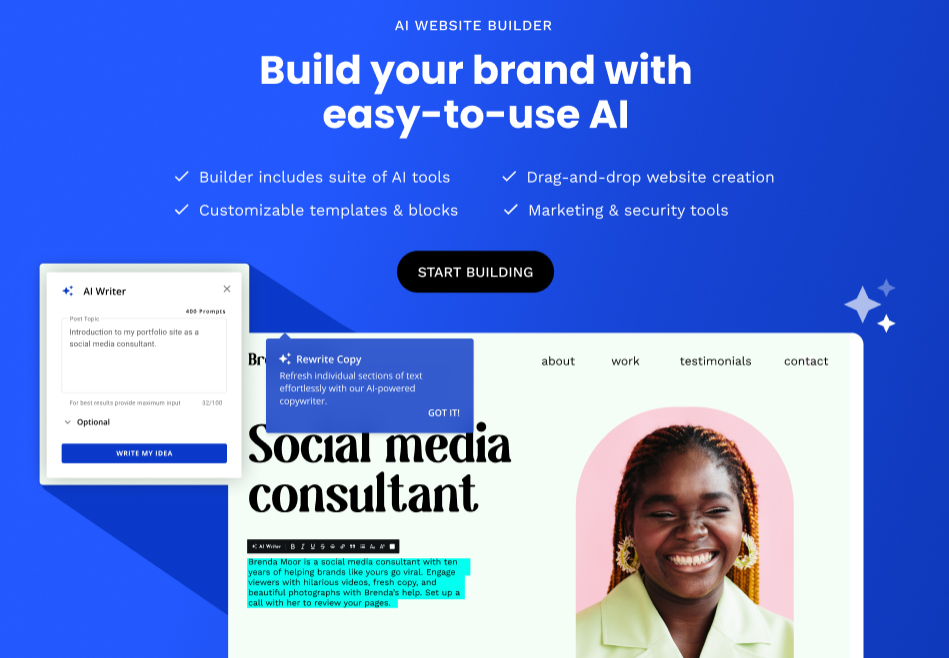
Zuzanna Blasco is a Polish designer who specialises in providing ecommerce solutions to a range of platforms including Amazon, Meta and Etsy. The current senior UX/UI lead engineer for Web.com, she has worked on AI tools that help people build websites faster, including a tool for creating domain names with the click of a button, and she and her team are dedicated to using AI to help businesses accelerate their growth.
She began her career working in print, and as part of our Day in the life series discusses how her early experiences creating wedding invitations, brochures and wall art taught her all she needed to know about creating user-friendly designs. We also chatted about the future of work meetings, and the disadvantages of AI. As an independent creative, Zuzanna also creates AI illustrations, some of which are shown here.
Tell me about a typical day in your role
My days as engineer team lead vary day to day depending on our current projects. Currently, I am collaborating with the front-facing designers of Newfold Digital and Web.com to create content for the company's websites. My primary focus is on curating site pages and upgraded screens that lead to our AI tools. Our overarching design goal is to provide our customers with simplified tools that make domain ownership and web construction accessible to all types of users and businesses. With the new AI features – such as the Web.com AI Website Builder – the process is now much faster.

What was your early career like?
I used to work at the Arizona State University (ASU) Print Lab, where I got to work with large, advanced printing technology. It was a lot of fun creating posters, brochures, wall murals and other materials for various companies in such a creative, collaborative space. Despite the increasing popularity of digital design, print is still a critical medium with the unique, humanised experience of holding it in your hands and feeling its texture. We used to print a lot of wedding invitations, and I loved working with different materials and shiny champagne papers.
Through my work in print, I learned a great deal about what people really want and need, which has transferred over well to my work in AI. Nowadays, QR codes leading to websites are in high demand for print advertising, and have helped bridge the physical and digital sides.
How did you start working with AI?
My journey with AI began when we decided our Web.com customers needed an AI Domain Generator to help them find unique and creative names for their businesses and websites. In response, we developed a service that allows you to input a few keywords and the AI will generate multiple unique domain names to choose from and purchase, so you won't have to settle for someone else's domain name. I also started using Midjourney early in my career, which has been an incredible creative outlet and demonstrates the progress we've made from using flat imagery to exploring 3D virtual worlds. I am excited to see what 2024 brings for us!

Which project are you most proud of?
Our Web.com AI-powered Online Presence app offers a convenient solution for naming your product without leaving the page. It's a tiny pop-up that appears whenever you click into a text box, generating content options for you. You can even add AI-generated photos to your website or blog posts –making most content creation and site copywriting work almost effortless. I enjoyed designing such a small but efficient, user- friendly and fun element for Web.com. I wish I could have it in my real life, popping up whenever I needed an answer. It's definitely more convenient than shouting 'Hey, Alexa' or 'Hey, Siri'.
Tell me about a tricky work-related challenge and how you approached it
AI is often portrayed as a threat to job security or an output for unreliable information, but in reality it can easily be leveraged to help businesses increase productivity and progress faster. The challenge lies in explaining to those who don't understand how AI works that it is not dangerous, but rather a helpful technology that can be used for good. Understanding these hesitations, Newfold aims to make our products simple, efficient, fun, secure and non-invasive.

How can creatives use AI to their advantage?
I strongly believe that our AI tool is the perfect solution for small businesses who don't have a complete team to manage their blog, schedule meetings, create posts for social media and more. These tools allow users to plan their tasks ahead of time and be more independent as a creative – eliminating the need for delayed tech support to bring a website to life. It also eliminates the hassle of calling support for smaller problems, like removing an image from a website or re-working a domain issue. Instead, users can simply instruct the AI to do it for them, like a digital personal assistant.
How do you think the 3D and real worlds can come together?
Pretty soon, our team meetings will be held virtually as augmented and virtual reality products and goggles become more accessible and universal. I would love to be able to interact more with some of my international coworkers and share a virtual day-to-day experience together. It would be amazing to have a face-to-face with the 'Women in our Newfold' group, for example, and I'm excited for AI to push us further into the virtual world.

Do you see any disadvantages to the advent of AI?
I have noticed that it may become difficult for teachers to distinguish between the work done by a student and that generated by AI. Thus, one of the biggest unknowns is the impact of AI on our education system and how we adapt to new styles of learning/teaching.
How inclusive is the design industry in 2024?
The design industry is inclusive because it can be used by anyone, anywhere, in any language, with any level of skill and knowledge. It offers an unlimited amount of opportunity for anyone who wishes to be experimental with their creativity or broaden their understanding of the web and digital marketing.

Who’s your dream client?
I have a unique desire to work with the worst-looking website from the 2000s. It is my dream to show them how we can transform their website into something that is both efficient and beautiful, with the tools we have now. I’m compelled by the challenge of transforming something outdated into a visually appealing website that is SEO-friendly, built with creative generative AI, and can capture customers through effective email lists. As a UX AI professional, I find it exhilarating to witness people's reactions to the possibilities that a new and improved website can bring to their business.

What career advice would you give your younger self?
My advice would be to dabble in a variety of things, communicate with diverse individuals, test your products thoroughly, and don't be fooled by appearances. Pretty products fail often. Sometimes functional is not pretty.
See more of Zuzanna's work on web.com







